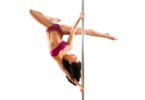Are you struggling to manage your fat levels in body and track your weight loss progress? Understanding body fat testing methods can help you determine your true fat percentage and optimize your fitness journey.
Why Scale Weight Isn’t Enough
Do you think your method of testing body fat is accurate? You’ll be surprised to learn the fat-finding facts. You’re dieting and exercising, but the numbers on the scale aren’t budging. And forget those height/weight tables based on body mass index, or BMI -they don’t distinguish muscle from fat, and are therefore useless for us athletic types. So how can you tell whether your program is working?
The key, Essay Lab experts say, is keeping track of how much body fat you’ve lost instead of relying on the bathroom scale. Yet so many ways to estimate body fat exist that even some scientists are confused. We weigh in with a few tips to make the most of skinfold-caliper testing and explain the limitations of digital scales and handheld devices that provide a digital readout of your body fat percentage. We also give you the skinny on such increasingly popular high-tech options as the Bod Pod, DEXA, and other methods available at hospitals and universities. Knowing the pluses and minuses of each approach can help you avoid scams and find out what you’re made of.
DEXA Scan: The Gold Standard in Body Fat Testing Methods
One of the most precise techniques for assessing fat levels in body is the Dual-Energy X-ray Absorptiometry (DEXA) scan.
How Does DEXA Work?
- Uses low-dose X-rays to scan the body.
- Measures bone mass, muscle mass, and fat percentage separately.
- Provides a highly detailed analysis of fat distribution.
Is DEXA Right for You?
- Cost-effective: Some health centers offer scans for as little as $60-$70.
- More reliable than traditional body density measurements.
- Available at many hospitals and clinics.
For those looking for an accurate and non-invasive method, DEXA scans are one of the best ways to track fat loss progress.
Underwater Weighing: The Old Gold Standard
Before advanced methods like DEXA scans and magnetic resonance imaging (MRI), the gold standard for measuring body composition was underwater weighing. While this method has been widely used, it doesn’t directly measure body fat but rather body density, which is why it’s referred to as densitometry.
How Underwater Weighing Works
The principle behind underwater weighing is simple:
- Fat floats, while lean mass (muscle & bone) sinks.
- By measuring a person’s weight in water vs. on land, an estimate of body fat percentage can be made.
However, this method isn’t 100% reliable, as it only measures body density—not the actual amount of fat.
Limitations Based on Age and Bone Density
Underwater weighing assumes a standard ratio of muscle to bone density, which isn’t always accurate.
- Older individuals with osteoporosis have less bone mass than expected, causing overestimation of body fat (since they sink less).
- Athletic women with a high muscle-to-bone ratio may get an inflated fat percentage, as their “lean” mass is less dense than the equation assumes.
A study published in the American Journal of Clinical Nutrition found that densitometry is one of the best methods for detecting muscle gains in women aged 50-70 due to bodybuilding training.
Densitometry’s Racial Bias & Accuracy Issues
- African-American women tend to have denser bones, which means densitometry underestimates their actual body fat percentage.
- Male African-American athletes sometimes register a negative body fat percentage, which is impossible unless a specialized equation is applied.
- Since other body fat methods—such as skinfold calipers and bioelectrical impedance analysis (BIA)—are calibrated to underwater weighing, they inherit these same inaccuracies.
Even so, as long as you aren’t hung up on knowing what your exact percentage of body fat is, these methods are useful in helping you track your progress by comparing it to previous results.
The Bod Pod: A Reliable Body Fat Testing Method
Another effective method for tracking fat levels in body is the Bod Pod, a machine that resembles a giant egg-shaped chamber.
How the Bod Pod Works
- Uses air displacement technology instead of water to measure body fat percentage.
- Faster and more comfortable than underwater weighing.
- Can be found in some fitness centers and health clinics.
Is the Bod Pod a Good Choice?
- Highly accurate when used consistently.
- Portable and more accessible than traditional water-based methods.
- Ideal for those looking for a non-invasive way to track body composition.
Why Skinfold Calipers Are a Reliable Body Fat Testing Method
If you prefer a cost-effective and simple method to measure fat levels in body, skinfold calipers may be a great option.
How Skinfold Calipers Work
- Measures subcutaneous fat (fat under the skin) at specific body points.
- Helps track fat loss trends over time.
- Commonly used in gyms and fitness centers.
Tips for Using Skinfold Calipers
- Choose a high-quality brand like Harpenden or Lange calipers for better accuracy.
- Ensure consistency by measuring the same spot every time.
- Remember that skinfold measurements do not account for deep visceral fat, so results may underestimate total body fat in older individuals.
Despite some limitations, skinfold calipers remain a practical method for monitoring fat loss over time.
Bioelectrical Impedance Analysis (BIA): A High-Tech Approach
High-tech bathroom scales and handheld devices that use BIA run a tiny current through your body to estimate body fat. Because muscle conducts and fat insulates, the electrical resistance is used to estimate body fat percentage. Unlike skinfold methods, BIA is “rigged” in that it uses low-tech input provided by you to make the electrical part seem more accurate than it is. Richard Pierson Jr., MD, professor of clinical medicine at St. Luke’s-Roosevelt Hospital, Columbia University, New York, states:
BIA measures allow for height, weight, gender, and sometimes activity level and age to be written into the equation. These by themselves give a pretty good estimate of fatness. The question then becomes, `What does the BIA add?’ With everything except the BIA, the error for predicting fat is about plus or minus 13%. With BIA, that’s reduced to plus or minus 10% or 9%, at best.
BIA is best used to estimate changes over time. Says Pierson,
I believe that measuring BIA serially would do much better than skinfolds to track short-term changes, since it takes many weeks/ months for skinfolds to change, while visceral fat (having more blood supply) will turn over faster and cannot be estimated by skinfold.
Besides, it’s easier to use one of the BIA devices than to have someone conduct a skinfold test on you.
Uneven fat distribution (for example, hip fat vs. arm fat) may further hurt BIA accuracy, as handheld BIA devices only assess the upper body, BIA scales only assess the legs and neither looks at the core body fat. Additionally, the fitter you are, the less accurate the test.
Some BIA devices have an “athlete” setting that helps overcome this problem; without it, results can be misleading.
Skinfold measures give a better idea of fat distribution (hips vs. triceps, and so on) and of fat under the skin, which is the most noticeable kind. As with other methods, Pierson and Martin agree that BIA isn’t reliable for determining the actual percentage of body fat or who is fatter than whom, but it can be used to check for changes over time in the same group of people.
To make the most of your BIA device, avoid dehydration and follow these guidelines before the test:
- Abstain from eating and drinking for four hours
- Avoid exercising for 12 hours before
- Urinate completely before testing
- Do not drink alcohol within 48 hours.
Other Methods for Measuring Fat Levels in Body
Magnetic Resonance Imaging (MRI)
- Uses cross-sectional body scans to assess muscle and fat areas.
- Highly precise but expensive ($250+ per scan).
- Typically used in medical research rather than for general fitness tracking.
Circumference Measurements & Waist-Hip Ratio
- Measures waist and hip circumference to estimate fat distribution.
- Best used to assess health risks, such as heart disease and diabetes.
- Women with a waist-to-hip ratio over 0.8 may have a higher risk of metabolic disorders.
Near-Infrared Reactance (NIR)
- A controversial method that uses light waves to estimate fat percentage.
- Not considered reliable by most health professionals.
- Avoid using NIR devices, as they often lack scientific accuracy.
Find the Right Fat Testing Method for You
Tracking fat levels in body is essential for monitoring progress in your weight loss journey.
- For the most accurate results: Choose a DEXA scan
- For gym tracking: Use skinfold calipers
- For convenience: Try BIA or Bod Pod
Don’t let inaccurate measurements discourage you—choose the right method and stay motivated on your fitness journey!
Final Thoughts on Measuring Fat Levels in Body
Don’t let unreliable methods hinder your weight loss goals. Choose the right body fat testing approach to accurately measure your progress and stay motivated on your fitness journey.







